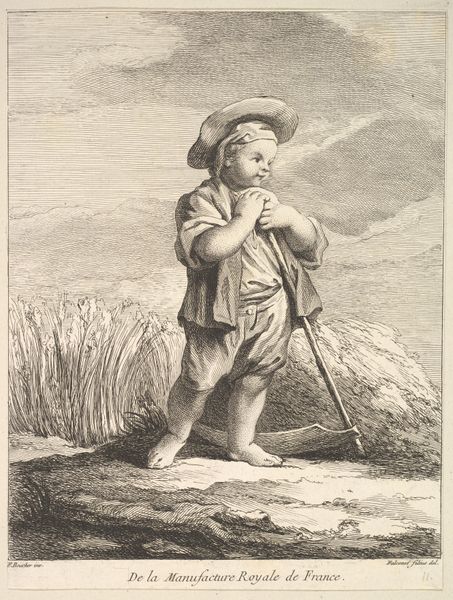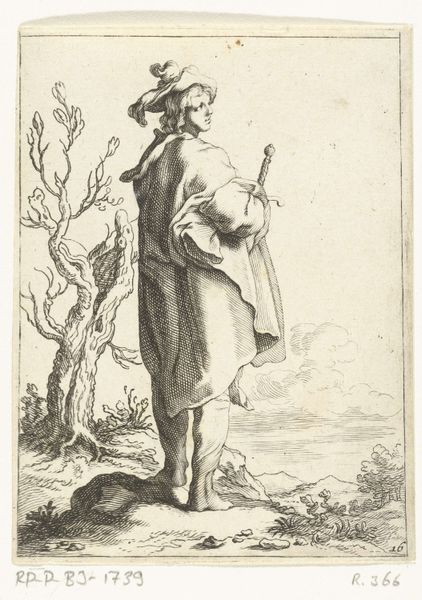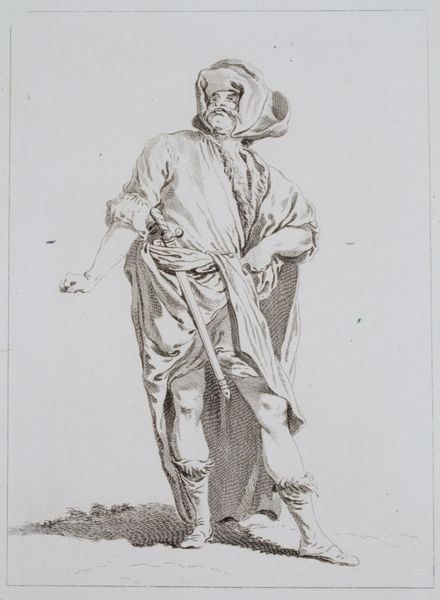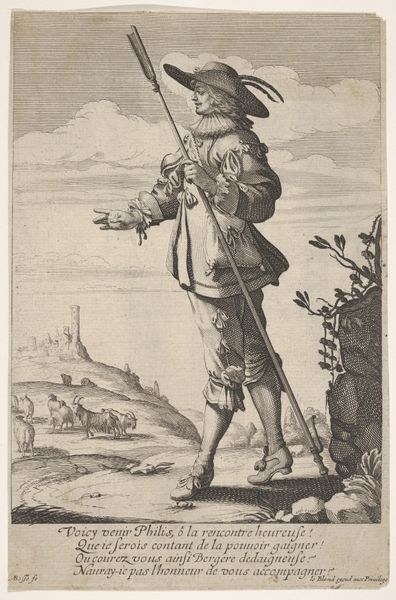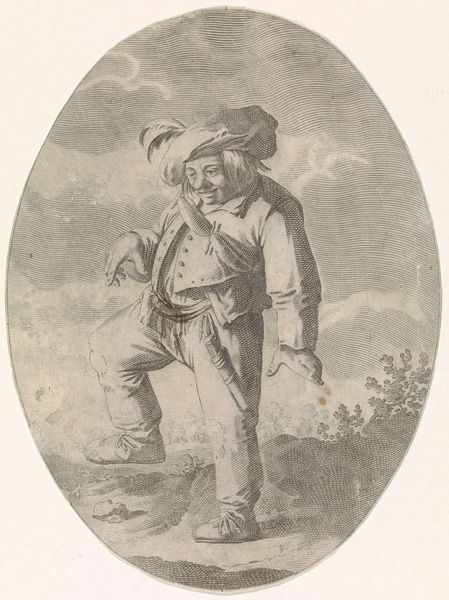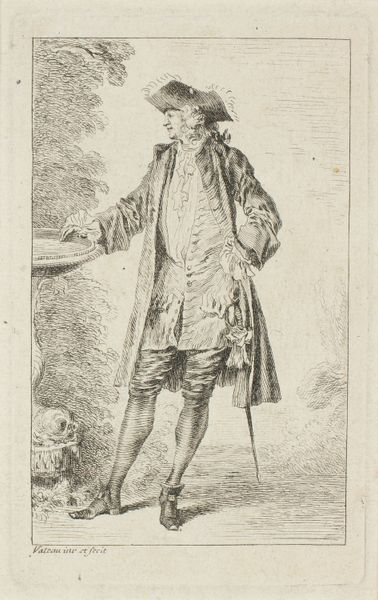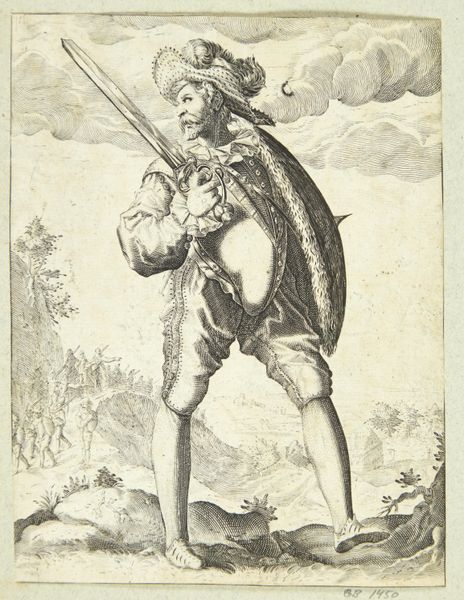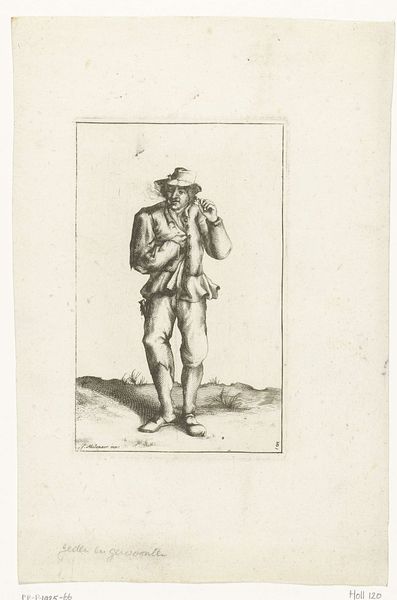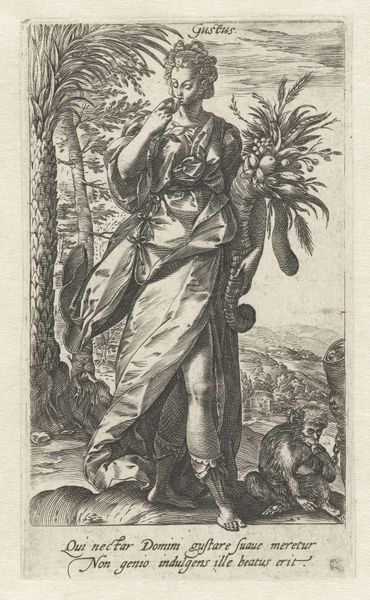
Dimensions: height 207 mm, width 154 mm
Copyright: Rijks Museum: Open Domain
Editor: Here we have Pieter de Mare's "Staande Herder," or "Standing Shepherd," an etching from the late 18th century. There's almost a caricature quality to this figure. What historical context might shed light on this work? Curator: Well, this print comes at a time when there's an idealized view of rural life, part of a broader cultural fascination with the "noble savage" concept, circulating prominently through Jean-Jacque Rousseau and other philosophical essays of the time. Editor: So, this shepherd isn’t necessarily meant to be a realistic portrayal? Curator: Exactly. It's less about representing the reality of a shepherd’s life and more about projecting an idealized image. The print enters a market—galleries, print shops—eager to consume images reinforcing certain social narratives about simplicity and the inherent virtue of rural life, particularly against a background of aristocratic corruption in other parts of Europe. It's the rise of genre-painting appealing to middle class moralism, though even this genre had close ties to the aristocratic taste and appreciation. De Mare, whose name means "the sea" could potentially represent the vast rural settings the elites and burgeoning middles class escaped to in spirit and actuality. Does the man even seem tired to you? Editor: I see what you mean; he doesn't. Curator: It's curated simplicity. But who benefits from it being perceived this way, I wonder? Editor: It's fascinating to consider how even seemingly simple genre paintings could reflect broader social and political ideals. Curator: Absolutely. It is these very ideals, often constructed through art, which shaped historical and contemporary policy. Thanks for noticing the value of this undercurrent.
Comments
No comments
Be the first to comment and join the conversation on the ultimate creative platform.

